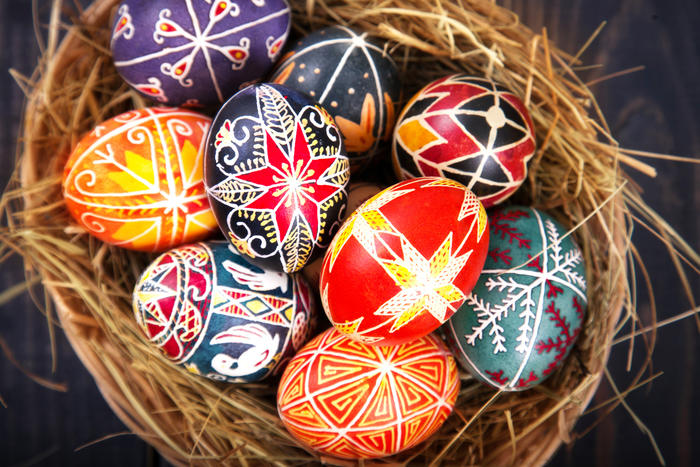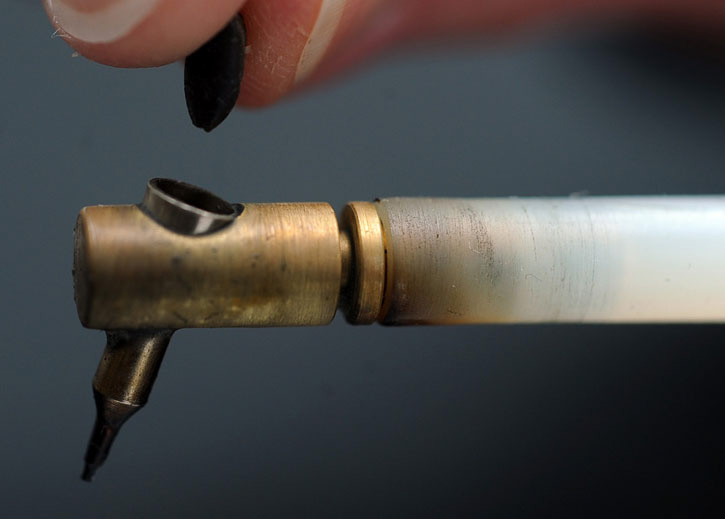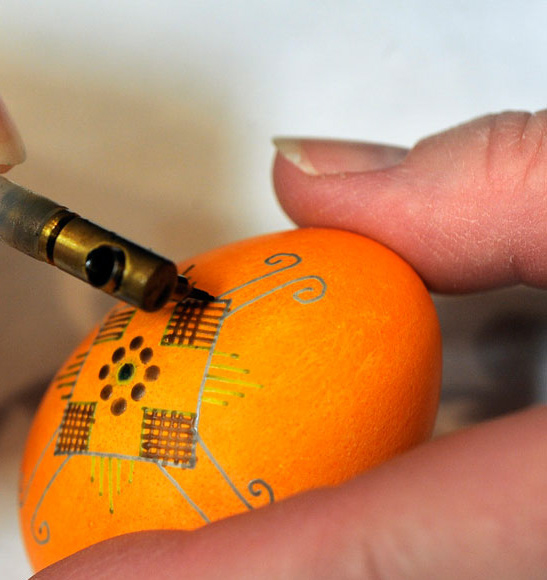Fasting has come in February and this time is special, because in fasting you often think about life and the eternal.
This is the time when you realize that I have been given a little time for life and this time between some year and some other. This time will remain on the stone with two dates engraved in memory about me and my life.
And realizing this, you humbly accept earthly life.
Even during fasting, you clean up a lot, get ready for spring, warmth and a new energy time. Therefore, you wash the house, sort out the rubble of things, hide New Year’s utensils. The snow this year was so long that at the end of March I pulled out Christmas attributes and courtyards from the still frozen ground, cleaned and folded until next year.
In fasting, you are preparing for Easter. And this is not only pies and Easter cakes. This is Easter eggs.
The symbols which decorated pysanky underwent a process of adaptation over time. In pre-Christian times these symbols imbued an egg with magical powers to ward off evil spirits, banish winter, guarantee a good harvest and bring a person good luck. After 988, when Christianity became the state religion of Ukraine, the interpretation of many of the symbols began to change, and the pagan motifs were reinterpreted in a Christian light.
A pysanka is a Polish-Ukrainian Easter egg, decorated with traditional folk designs using a wax-resist method.
Pysanky are so varied in style that it is difficult to list them all. They are divided by origin – there are Ukrainian, Polish, and Tripilsky. Pysanky are divided into regions – Hutsulsik, Podolsk, Lemkivsky.
They differ in patterns – there are patterns, there are images, there are flowers or geometric shapes.
But recently they even began to decorate them with decorative ornaments, pieces of fabric, beads and fabric.
They also differ in the methods of creation – drapanka, kraska, pysanka and krapanka.
I use a method known in ancient times – waxing.

What do the colors of Easter eggs mean?
The red color symbolizes the color of the blood shed at one time by Jesus Christ.
Black color is compared with sadness, crying and death, followed by the birth of a new life.
Yellow symbolizes prosperity in the harvest and wealth, but also this color represents the sign of the sun and fate.
Blue conveys warm feelings for a neighbor, wishing him health and strength.
Green - symbolizes the rebirth of all living things and recovery after a serious illness.
White color implies a heavenly cleansing, symbolizing a new life that is emerging in heaven.
Brown represents the fertility and great power of the earth.
It is best to color them with food coloring: using onion peel, turmeric, spinach, red cabbage, and you can also use cherry juice. There are also ready-made food colorings in the form of powders or tablets.

I am use stylus input wax in.A piece of wax is placed in the stylus and melted over a fire. Wax cools very quickly, there is no time to think, you need to write with wax very quickly.

You apply a pre-selected drawing on the egg with a stylus in which the wax melts, wait a moment and then lower it into a jar of prepared paint.
So you repeat several times – if there are several colors. Then you put the egg over the fire and quickly wipe the vox from the egg – an ornament remains on it.
Pysanka, unlike krashenka, is by all means a raw egg. Easter eggs were intended only for donation.
Pysanka is a talisman
In the old days, it was believed that only the primordial eggs of young hens, laid in March, on the first spring new moon, are suitable for making Easter eggs. Also needed were pure beeswax, pure water, live fire, new wax brushes, new napkins, new clay pots, and a potion (herbs and trees) to extract the colors.

WhenI write my Pysanka,each line is ,,I hope,, and ,,I wish,, and ,,I thought,, and ,,I pray,, my Pysanka for Peace